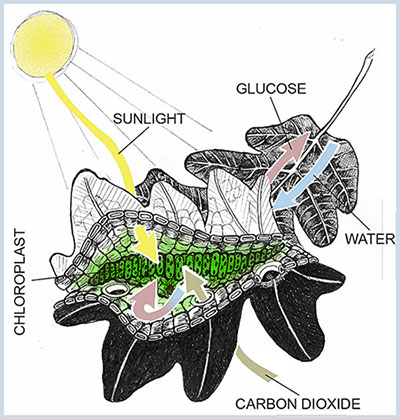
Photosynthesis is a natural process by which trees and plants use energy from the sun and carbon dioxide from the air to make the food they need to live and grow. By storing carbon above and below the ground, the trees and plants in forests contribute to the production of oxygen as a byproduct of photosynthesis.

How does photosynthesis work?
Photosynthesis provides most of the oxygen that humans and animals breathe. Here’s how it works: Tree and plant roots absorb water, as well as minerals and nutrients, from the soil. At the same time, the leaves or needles absorb carbon dioxide from the air. These raw materials flow to plant cells containing chlorophyll. Chlorophyll uses sunlight energy to transform the carbon dioxide and water into oxygen and carbon-based compounds such as glucose, a sugar that helps plants grow. In the process, the plant or tree produces excess oxygen, which it releases into the atmosphere.
Forest Fact Break: Photosynthesis
This 90-second animated video explains how photosynthesis works and why our forests are such an important part of that process. It is part of OFRI’s Forest Fact Breaks series, which uses bold animated graphics, sound effects and narration to teach about natural resource topics in a fun, easy-to-understand way.
Photosynthesis and carbon
In addition to providing us with oxygen that we breathe, forests and photosynthesis also play a vital role in removing carbon dioxide from the atmosphere, helping mitigate the harmful impacts excess carbon dioxide emissions can have on the environment.